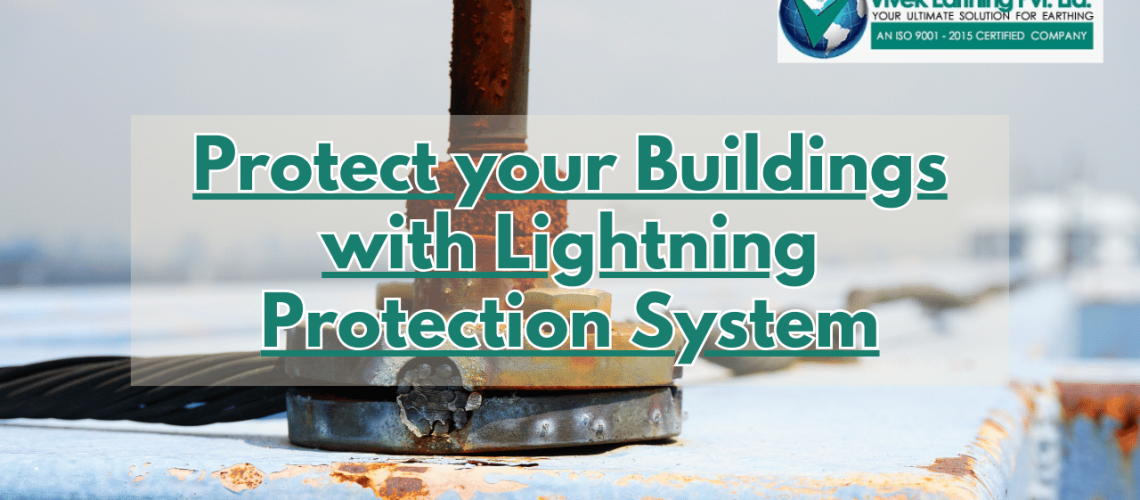Comprehensive Guide to Lightning Protection Systems by Vivek Earthing
In the realm of building safety, one of the most critical aspects often overlooked is the protection against lightning strikes. Vivek Earthing’s video presents a thorough understanding of lightning protection systems (LPS), offering valuable insights into safeguarding structures against lightning. This comprehensive guide aims to delve deeper into the subject, providing an extensive overview of LPS, their importance, and best practices as per Vivek Earthing’s expertise.
Understanding Lightning Protection Systems
A Lightning Protection System (LPS) is a framework designed to protect a building from direct lightning strikes and their secondary effects, such as electrical surges. It typically consists of air terminals (lightning rods), down conductors, and grounding systems. The primary objective of an LPS is to safely conduct the immense electrical currents associated with lightning to the ground, preventing damage to the structure and ensuring the safety of its occupants.
The Necessity of Lightning Protection
Lightning strikes are unpredictable and can cause catastrophic damage to buildings, electronic equipment, and can even lead to loss of life. The significance of installing an LPS lies in:
- Preventing Structural Damage: Lightning’s immense power can destroy building materials and ignite fires.
- Protecting Electrical Systems: Electrical surges caused by lightning can fry circuitry and render electronic devices useless.
- Ensuring Human Safety: Direct or indirect exposure to lightning can be fatal; hence, an LPS is crucial for safety.
Vivek Earthing’s Approach to Lightning Protection
Vivek Earthing’s approach to lightning protection is holistic, involving several critical steps:
- Risk Assessment: This involves evaluating the lightning risk for a particular building, considering its location, height, and surrounding environment.
- Quality of Materials: Using high-standard, certified materials ensures the longevity and effectiveness of the LPS.
- Grounding System: A robust grounding system is the cornerstone of effective lightning protection, providing a safe path for lightning to travel to the ground.
- System Design and Installation: Tailoring the LPS to the specific needs of the building, followed by professional installation, is key to its effectiveness.
- Regular Maintenance and Inspections: An LPS should be regularly inspected and maintained to ensure it continues to function correctly.
Detailed Components of Lightning Protection Systems
- Air Terminals: Also known as lightning rods, these are installed at the highest points of a building to intercept lightning strikes.
- Down Conductors: These are heavy-duty cables that carry the lightning current from the air terminals to the ground system.
- Grounding System: A network of rods and conductors that dissipates the lightning current into the earth.
- Surge Protection Devices: Installed in electrical panels, these devices protect electrical appliances from surges.
- Bonding: Ensures that all metallic components of a building are at the same electrical potential, reducing the risk of electrical shocks.
Best Practices in Lightning Protection
- Professional Assessment and Installation: Always engage with professionals like Vivek Earthing for assessment and installation to ensure compliance with safety standards.
- Using Quality Materials: Opt for materials that meet or exceed national and international standards to ensure the system’s reliability.
- Adhering to Safety Regulations: Follow local building codes and safety regulations in the installation of LPS.
- Customization: Each building is unique, and so should be its LPS. Customizing the system to fit the building’s specific needs is crucial.
- Awareness and Education: Building owners and occupants should be educated about the LPS, its function, and the need for regular maintenance.
The Role of Vivek Earthing in Promoting Safety
Vivek Earthing plays a pivotal role in promoting building safety against lightning strikes. Their commitment to using quality materials, providing customized solutions, and focusing on customer education sets them apart in the field of lightning protection.
Conclusion
Lightning protection systems are not just a regulatory compliance but a necessity for safeguarding life and property. The insights provided by Vivek Earthing highlight the importance of understanding, installing, and maintaining these systems effectively. As we continue to face the challenges posed by natural phenomena like lightning, it is imperative to adopt such protective measures, ensuring a safer environment for everyone.

FAQs
1. What is a Lightning Protection System (LPS) and How Does it Work?
Ans. An LPS is a system designed to protect buildings from the damaging effects of lightning strikes. It consists of air terminals (lightning rods), down conductors, and a grounding system. The system works by intercepting the lightning strike, safely conducting its powerful electrical current to the ground, thereby preventing damage to the structure and ensuring the safety of occupants.
2. Why is Lightning Protection Important for Buildings?
Ans. Lightning protection is crucial because lightning strikes can cause severe structural damage, electrical system failures, and even fires. By safely directing the lightning current into the ground, an LPS prevents such catastrophic outcomes, ensuring the safety of the building and its occupants.
3. Can Lightning Protection Systems Prevent All Lightning Damage?
Ans. While LPS are highly effective in minimizing the risk of major damage caused by direct lightning strikes, they cannot guarantee complete immunity from all forms of lightning-induced issues, such as secondary electrical surges. However, they are essential in significantly reducing the risk and severity of lightning-related damage.
4. How Often Should a Lightning Protection System be Inspected or Maintained?
Ans. It is recommended to have your LPS inspected and maintained at least once a year. Regular maintenance is crucial to ensure that all components of the system are in good working condition and to identify any potential issues that could compromise its effectiveness.
5. Are There Specific Standards or Regulations for Lightning Protection Systems?
Ans. Yes, there are specific national and international standards and regulations that govern the design, installation, and maintenance of LPS. These standards ensure that the systems are effective and safe. It’s important to work with a certified professional who understands and adheres to these standards, like Vivek Earthing, to ensure compliance and optimal protection.


